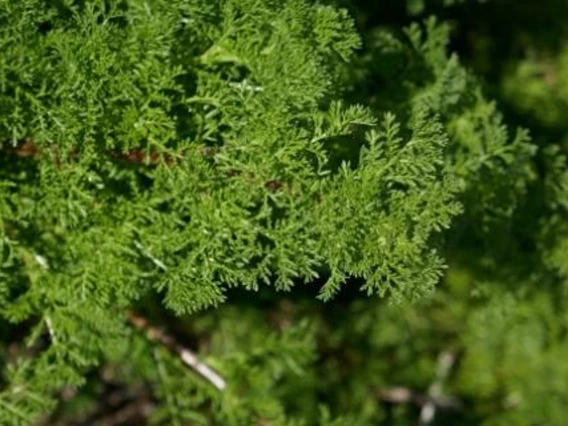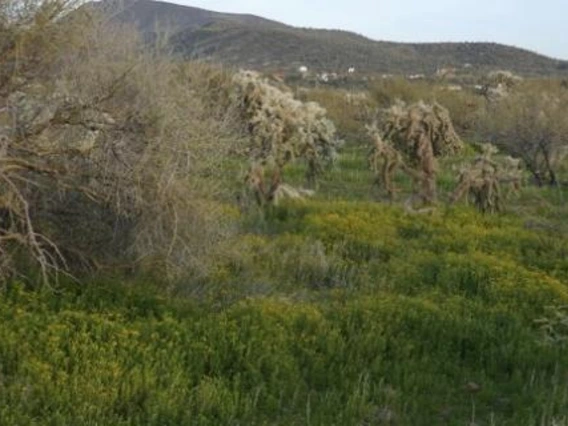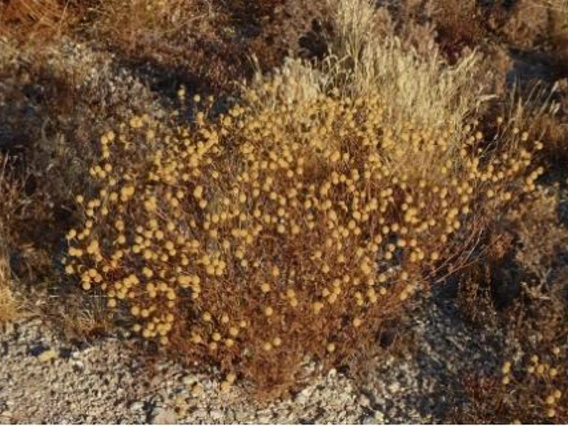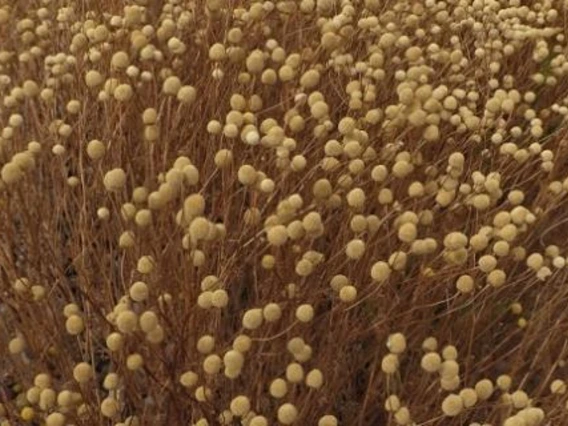Stinknet
Our research is helping property managers, HOAs and homeowners deal with this invasive plant.
Arizona Invasion
Stinknet, an invasive African annual weed that crowds out native plants and becomes a fire hazard in summer, is spreading in Maricopa, Pinal and Pima counties. Oncosiphon pilulifer, sometimes also known as globe chamomile, is a member of the sunflower family. It can grow more than 2 feet tall and is spreading in Arizona as well as California, Nevada, Australia and Mexico. The plant grows during winter.
Resources

Description
Stinknet has finely dissected, carrot-like leaves. Spherical yellow flower heads consisting of many tiny flowers. Crushed foliage has a pungent, turpentine-like odor.

Habitat
The weed can grow in a wide variety of habitats – back yards, desert riparian areas, urban sidewalk cracks, disturbed or undisturbed soil.

Winter Growth
It grows through winter, germinating from November–April and flowering (which can last several weeks) from February–June.

Summer Hazard
Dead stinknet is a fire hazard in summer, when it becomes highly flammable brush topped by seed heads (dried flowers). These seed heads break up, helping the tiny seeds spread on wind or water and on animals, people and vehicles.

Removal
Take care when removing stinknet after it has dried and gone to seed. Bag the weeds carefully to contain seeds. Clean shoes, clothing, and equipment to prevent spread.

Allergic Reactions
Stinknet can cause respiratory or skin allergic reactions. Wear gloves, long sleeves and long pants when pulling the weeds.
What to Do
- Eliminate it as soon as possible after it emerges; do not let it flower.
- Pull by hand or use a hula hoe or weed whacker (plants cut with string trimmer may grow back).
- A wide variety of herbicides, including glyphosate and pre-emergent herbicides, are effective. Always follow label instructions and wear protective equipment. Do not use household chemicals to kill weeds, use a product manufactured and labeled for use as an herbicide.
- Brush off clothing and shoes at the trailhead after hiking in stinknet areas. Clean tarps, tents and other gear after camping near the weed.
- Do not allow pets to run through patches of dry stinknet. Clean them off if they do.
- Remove dead stinknet carefully – it will shed thousands of seeds, which can live in soil up to five years.
- Have a management plan to look annually for young plants and remove them before they can go to seed.

